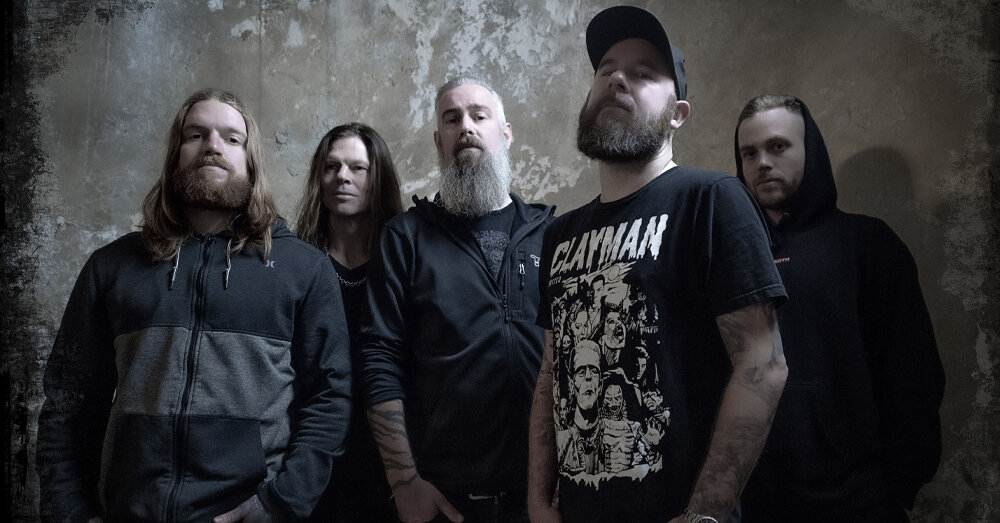Emerging as a rebellious response to the prevailing musical norms of its time, metal music embodied raw power and unbridled expression. Bands like Black Sabbath and Led Zeppelin laid the groundwork, blending bluesy guitar solos with heavy distortion and themes that ranged from the occult to social commentary. This fusion of intensity and introspection struck a chord with audiences disillusioned by the mainstream.
As the genre gained traction, its influence spread like wildfire across continents. In the United States, bands like Metallica and Slayer spearheaded the thrash metal movement, characterized by breakneck speed and aggressive lyricism. Meanwhile, in Europe, bands such as Iron Maiden and Judas Priest pioneered the soaring vocals and intricate guitar work that defined traditional heavy metal.
Beyond its musical innovations, metal music became a cultural touchstone for millions worldwide. Its imagery of leather-clad musicians, adorned with tattoos and long hair, became synonymous with defiance and nonconformity. Fans, known affectionately as “metalheads,” formed tight-knit communities where music wasn’t just entertainment but a way of life—a rallying cry against societal norms.

Over the decades, metal music has continued to evolve, spawning subgenres like death metal, black metal, and nu-metal, each pushing the boundaries of sound and lyrical themes. Bands such as Slipknot and Tool have incorporated complex rhythms and avant-garde visuals, ensuring metal’s relevance in an ever-changing musical landscape.
Today, metal music stands as a testament to the enduring power of artistic expression. Its ability to evoke strong emotions and provoke thought makes it more than just a genre—it’s a cultural force that resonates with those who seek authenticity and intensity in their music. As metal continues to evolve and adapt, one thing remains certain: its impact on culture and society will endure for generations to come.
Unleashing the Beast: How Metal Music Redefined Musical Rebellion
Metal music isn’t just about sound; it’s a visceral experience that shakes the very foundation of what’s considered acceptable in music. The growling vocals and blistering guitar solos serve as a sonic battleground where artists unleash their innermost frustrations and angst. This genre doesn’t shy away from controversy; instead, it embraces it, using distortion and aggression as tools to provoke thought and emotion.
What sets metal apart is its ability to resonate with a global audience that feels disenfranchised or misunderstood. It’s not just about loud noise; it’s a cultural movement that embodies the rebellious spirit of youth. Metal concerts are cathartic experiences where fans find solace in the chaos, forging a sense of belonging in a world that often feels chaotic and alienating.

But metal’s influence goes beyond mere rebellion; it’s a catalyst for artistic innovation. Bands constantly push the boundaries of musical expression, blending genres and experimenting with new sounds to keep the genre fresh and relevant. From thrash metal to death metal, each subgenre brings its own unique flavor to the table, attracting diverse audiences united by their love for heavy, unapologetic music.
Metal music isn’t just a genre; it’s a force of nature that continues to evolve and adapt. Its impact on popular culture is undeniable, inspiring generations of musicians and fans alike to embrace individuality and challenge the status quo. Whether you’re headbanging at a concert or dissecting the lyrics of your favorite album, metal invites you to unleash your inner beast and join a musical rebellion unlike any other.
From Underground to Mainstage: Metal Music’s Journey through Decades
Initially dismissed by mainstream audiences as too loud or aggressive, metal found its foothold in the underground music scene, where bands like Black Sabbath and Led Zeppelin laid the foundations for what would become a global phenomenon. The raw energy and rebellious spirit of early metal resonated with a growing audience seeking music that reflected their frustrations and desires.
As the 1980s dawned, metal began to diversify into various subgenres, each with its own distinct sound and identity. Bands like Iron Maiden and Judas Priest brought a theatrical flair to the genre, while others like Metallica and Slayer pushed the boundaries with fast-paced thrash metal that spoke to a new generation of fans.
The 1990s saw metal evolve further, with the rise of alternative and nu-metal bands such as Nirvana and Korn blending metal’s aggression with elements of punk, grunge, and hip-hop. This era also witnessed the globalization of metal music, as bands from Europe, South America, and Asia gained international acclaim and forged new sonic landscapes.
In the 2000s and beyond, metal continues to thrive, adapting to technological advancements and changing musical tastes. The internet and social media have democratized access to metal music, allowing fans to discover new bands and engage with their favorite artists directly.
Today, metal stands as a testament to the enduring power of music to provoke thought, evoke emotion, and unite people across cultures and continents. From its humble beginnings in smoky clubs to headlining major festivals, metal music’s journey is a testament to its resilience, authenticity, and unwavering connection with its passionate fan base.
Beyond the Noise: Exploring Metal Music’s Influence on Global Culture
At its core, metal is more than just a genre; it’s a sonic rebellion against the mainstream. From the blistering guitar solos to the thunderous drumbeats, every note and lyric is crafted to evoke emotion and provoke thought. Metal bands like Metallica, Iron Maiden, and Black Sabbath have become household names not just in their home countries but worldwide, transcending language barriers with their powerful compositions.
One of the most striking aspects of metal music is its ability to resonate with diverse audiences. Whether you’re in Tokyo or New York City, metalheads share a common bond that transcends cultural differences. The music’s themes of rebellion, angst, and perseverance strike a chord with listeners from all walks of life, offering a sense of solidarity in a chaotic world.
Beyond its musical influence, metal has also left an indelible mark on fashion and lifestyle choices. The iconic imagery of metal bands—from skull motifs to leather jackets—has permeated mainstream culture, influencing runway designs and streetwear trends alike. Metalheads proudly wear their allegiance on their sleeves, embracing the genre’s rebellious spirit as a badge of honor.
Moreover, metal music has sparked important conversations about social issues and personal identity. Lyrics often delve into topics like politics, environmentalism, and existentialism, prompting listeners to reflect on the world around them. In a society where conformity is often the norm, metal encourages individuality and critical thinking, challenging listeners to question authority and forge their own path.
Metal Music Icons: Legends Who Shaped a Genre and Beyond
One such titan is Ozzy Osbourne, whose haunting voice and larger-than-life persona catapulted Black Sabbath to fame in the 1970s. Dubbed the “Prince of Darkness,” Osbourne’s unique vocal style and dark lyrics set the stage for the emergence of heavy metal as a dominant force in music. His influence reverberates through countless bands who continue to draw inspiration from his work.
Moving forward, Metallica emerges as another cornerstone of the genre. With blistering guitar solos and relentless drumming, Metallica pioneered thrash metal and brought a new level of technical proficiency to the forefront. Songs like “Master of Puppets” and “Enter Sandman” remain anthems of rebellion and resilience, resonating with fans worldwide.
Not to be outdone, Iron Maiden’s galloping rhythms and operatic vocals redefined the boundaries of metal music. Led by Bruce Dickinson’s soaring voice and Steve Harris’ masterful bass lines, Iron Maiden’s concept albums like “The Number of the Beast” and “Powerslave” elevated storytelling in metal to epic proportions.
Meanwhile, the ferocity of Slayer unleashed a wave of aggression that pushed the genre into darker territories. Known for their breakneck speed and uncompromising lyrics, Slayer’s impact on thrash metal is undeniable, influencing bands across the metal spectrum.
Breaking Boundaries: How Metal Music Became a Global Phenomenon
Imagine a genre so powerful that it defies geographical constraints, transcending language barriers to connect with listeners on a primal level. Metal music does just that. From the thunderous riffs of Black Sabbath to the intricate melodies of Iron Maiden, metal bands have crafted a sonic landscape that speaks to the rebellious spirit in all of us.
But how did metal music achieve this global dominance? It wasn’t overnight, nor was it accidental. Metal’s rise can be attributed to several key factors, chief among them being its raw energy and emotional depth. Unlike pop music, which often aims to please the masses, metal revels in its intensity, offering listeners an outlet for their frustrations and passions.

Another crucial element is the sense of community that metal fosters. Fans aren’t just listeners; they’re part of a worldwide tribe bonded by their love for distortion-heavy guitars and powerhouse vocals. Whether in Tokyo or Toronto, metalheads share a common language that goes beyond words.
Moreover, metal’s ability to adapt and evolve has been instrumental in its global appeal. Over the decades, it has incorporated elements from various cultures and musical styles, creating subgenres that cater to diverse tastes. From Scandinavian death metal to Brazilian thrash, each region has put its own spin on the genre, adding layers of richness to its global tapestry.








